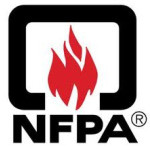- Industry: Fire safety
- Number of terms: 98780
- Number of blossaries: 0
- Company Profile:
Established in 1896, NFPA's mission is to reduce the worldwide burden of fire and other hazards on the quality of life by providing and advocating consensus codes and standards, research, training, and education.
The reflection of light in which the reflected rays are preferentially returned in the direction close to the opposite of the direction of the incident rays, with this property being maintained over wide variations of the direction of the incident rays.
Industry:Fire safety
The rate(s) at which a nozzle is designed to flow water when operated at its rated pressure.
Industry:Fire safety
The process of using external methods or devices (e.g., hand and forearm immersion, misting fans, ice vests) to reduce elevated core body temperature.
Industry:Fire safety
The rate of flow or velocity of air moving into the chemical fume hood entrance or face, as measured at the plane of the chemical fume hood face.
Industry:Fire safety
The process of preventing a load from shifting in any direction.
Industry:Fire safety
The number of passengers traveling between two stations on board a train or trains.
Industry:Fire safety
The principle of using a light source and a photosensitive sensor arranged so that the rays from the light source do not normally fall onto the photosensitive sensor. When smoke particles enter the light path, some of the light is scattered by reflection and refraction onto the sensor. The light signal is processed and used to convey an alarm condition when it meets preset criteria.
Industry:Fire safety
The receipt and management of requests for emergency medical assistance in the emergency medical services (EMS) system.
Industry:Fire safety
The resistance of a material to radiant heat, measured in seconds, when exposed to a vertically oriented radiant heat source, positioned at a specific horizontal distance from the vertical placement of the protective material, sufficient to cause a second-degree burn to human tissue.
Industry:Fire safety
